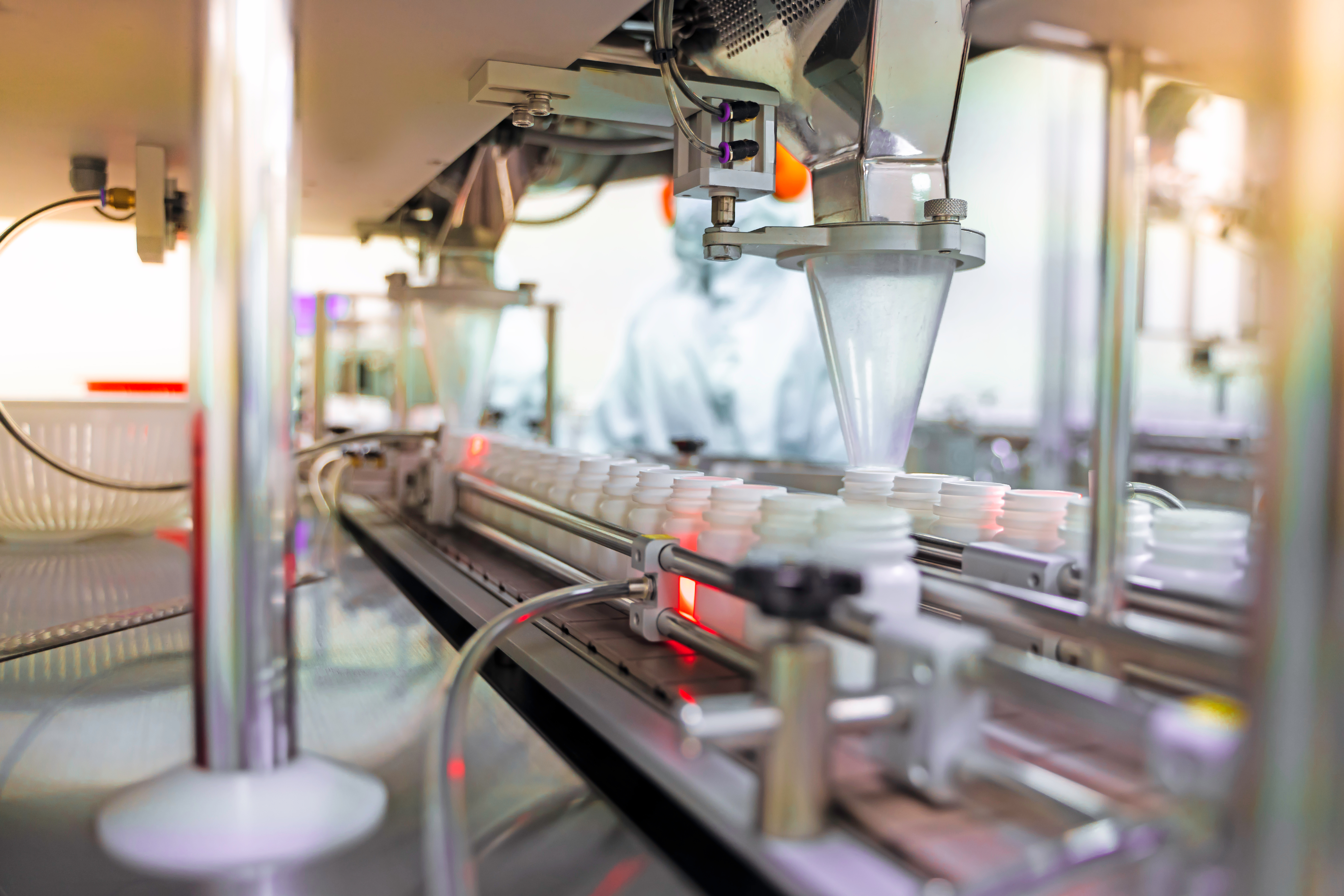Dust Collection Solutions for the Pharmaceuticals and Nutraceuticals Industry
At Sly, we understand the unique challenges faced by the pharmaceutical and nutraceutical industries regarding dust control. Manufacturing solid and powdered drugs, vitamins, and nutraceuticals can generate significant dust, posing various hazards, such as combustible, toxic, and potentially harmful. Effective dust collection is imperative in pharmaceutical and nutraceutical production to mitigate worker risks, ensure compliance with regulatory requirements, and prevent cross-contamination within the facility.
While all types of pharmaceutical and nutraceutical production raise concerns about air quality, special attention should be given to dust control in solid dosage processes, including the production of tablets, powders, and powder-filled capsules. Unchecked pharmaceutical and nutraceutical dust has the potential to compromise processes and endanger the well-being of workers.
Dust and Gases: Safeguarding Workers and the Environment with Precision and Efficiency

Capture
Our source capture equipment is strategically positioned at the origin of dust emissions, swiftly drawing in particles as they are released into the air. We maintain a healthier and safer environment by preventing dust cloud formation and minimizing dispersion.
Transport
Once the particles have been captured, they are efficiently transported through a well-designed ducting system. This seamless transfer ensures the particles are effectively managed and prepared for the next phase.
Filtration/Evacuation
Upon entering the ducting system, the captured dust can be directed externally or channeled through a filtration system. This approach allows for energy and financial savings, as the filtered dust can be recycled back into the facility, promoting a more sustainable and cost-effective operation.
By meticulously addressing each phase, we prioritize safety, minimize environmental impact, and optimize overall performance.
Challenges in Dust Collection for the Pharmaceutical and Nutraceutical Industries
The pharmaceutical and nutraceutical industries face numerous challenges regarding dust control. The specific risks and difficulties depend on the ingredients and processes involved.
- Hazardous/high-potency pharmaceutical dust: Manufacturing processes that generate dust with Active Pharmaceutical Ingredients (APIs) require stringent controls to protect workers from exposure. Many pharmaceutical dusts are toxic, even in small quantities. Any exposure to medications outside of doctor-prescribed channels presents health concerns for employees. Uncontrolled pharmaceutical dusts can cause significant side effects, drug interactions, or dangerous allergic reactions. High-potency drugs demand extra care to prevent inhalation or skin/mucus membrane exposure, even in small amounts.
- Combustible dusts: Many dusts generated in pharmaceutical and nutraceutical production are highly combustible, potentially leading to explosions when concentrated in the air or inside a dust collection machine. Special precautions must be taken during the collection of combustible dusts to minimize the risks of an explosion.
- Cross-contamination concerns: Cross-contamination is a significant worry in the pharmaceutical and nutraceutical industries. Improperly controlled dust can escape enclosures and contaminate other production lines, posing sanitation and safety risks, including the potential for dangerous allergic reactions.
- Water vapor or solvents: Certain pharmaceutical compounding and manufacturing processes create water vapor, solvent vapor, or moisture-laden dusts, posing unique challenges for dust collection. Hygroscopic dusts absorb moisture from the air, making them heavier and stickier. These dusts are harder to remove from filters and can cause excessive filter clogging.
- Nuisance dust: While dust created during the production of vitamins, protein powders, and other nutraceuticals may not be particularly toxic or dangerous, it is still crucial to prioritize dust control. Inhaling nutraceutical dust can lead to health problems such as lung irritation, asthma aggravation, and allergic reactions in susceptible employees. Uncontrolled dust of any type also has implications for housekeeping and sanitation.
Dust Generation in Pharmaceutical and Nutraceutical Production Processes
The production of solid dosage forms in the pharmaceutical and nutraceutical industry involves various processes, each posing its own concerns regarding dust generation. Some of these processes include:
- Tablet pressing
- Capsule filling
- Powder batch mixing and milling
- Wet and dry granulation
- Pelletizing and spheronization
- Fluidized bed processes
- Drying processes
- Weighing and packaging
It is crucial to address and mitigate dust creation in these processes to ensure the safety and quality of the products.
Regulations for Dust Control in the Pharmaceutical and Nutraceutical Industries
The pharmaceutical and nutraceutical industries are subject to stringent regulations covering all stages of the production process, from sanitation to packaging. The relevant regulations for dust control primarily fall into two categories: nuisance dusts and hazardous chemicals. Pharmaceutical and nutraceutical manufacturers must also adhere to OSHA and NFPA standards for combustible dusts.
Considerations for Selecting a Dust Control Solution in the Pharmaceutical and Nutraceutical Industry
Engineers designing dust control solutions for pharmaceutical and nutraceutical dusts must take several factors into account, including:
- Human health hazards associated with the dust: Does it contain an API? What is the Permissible Exposure Limit (PEL) for the dust?
- Physical characteristics of the dust: How much dust is produced? Is the process contained within a hood or cabinet, or is it more open?
- Combustibility of the dust: What are the combustion risks in the production environment?
- Moisture level of the dust: Are water vapor or solvents present in the air?
- The presence of dangerous chemical vapors, gases, or volatile organic compounds (VOCs) is produced along with the dust that requires control.
At Sly, we offer a comprehensive range of top-quality dust collection equipment designed to safeguard pharmaceutical and nutraceutical processing operations from potentially combustible and hazardous dust. Our systems efficiently remove or recycle dust, promoting cleanliness and productivity. Contact Sly today, and let us tailor a dust collection system to meet the unique needs of your operations.

